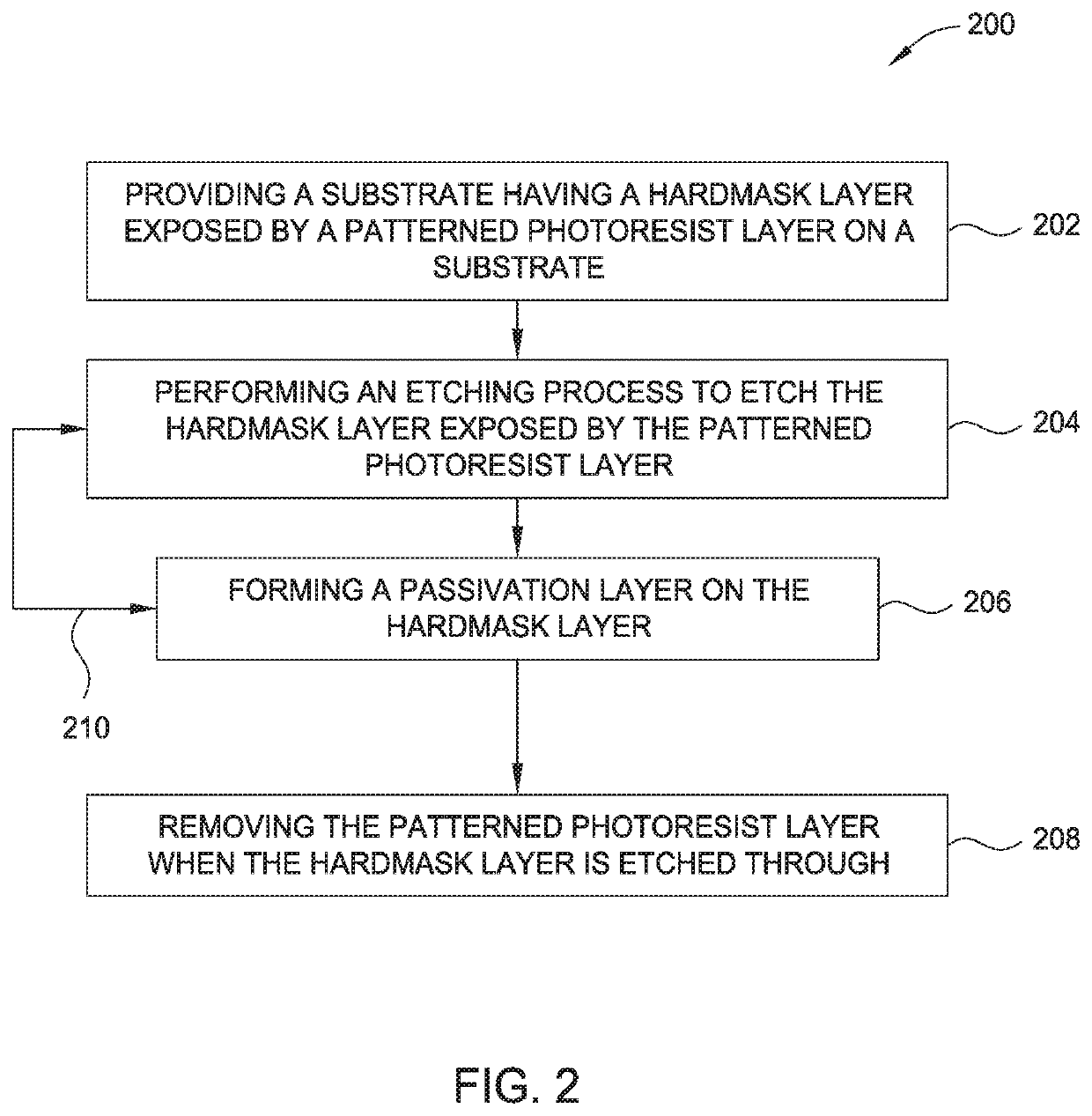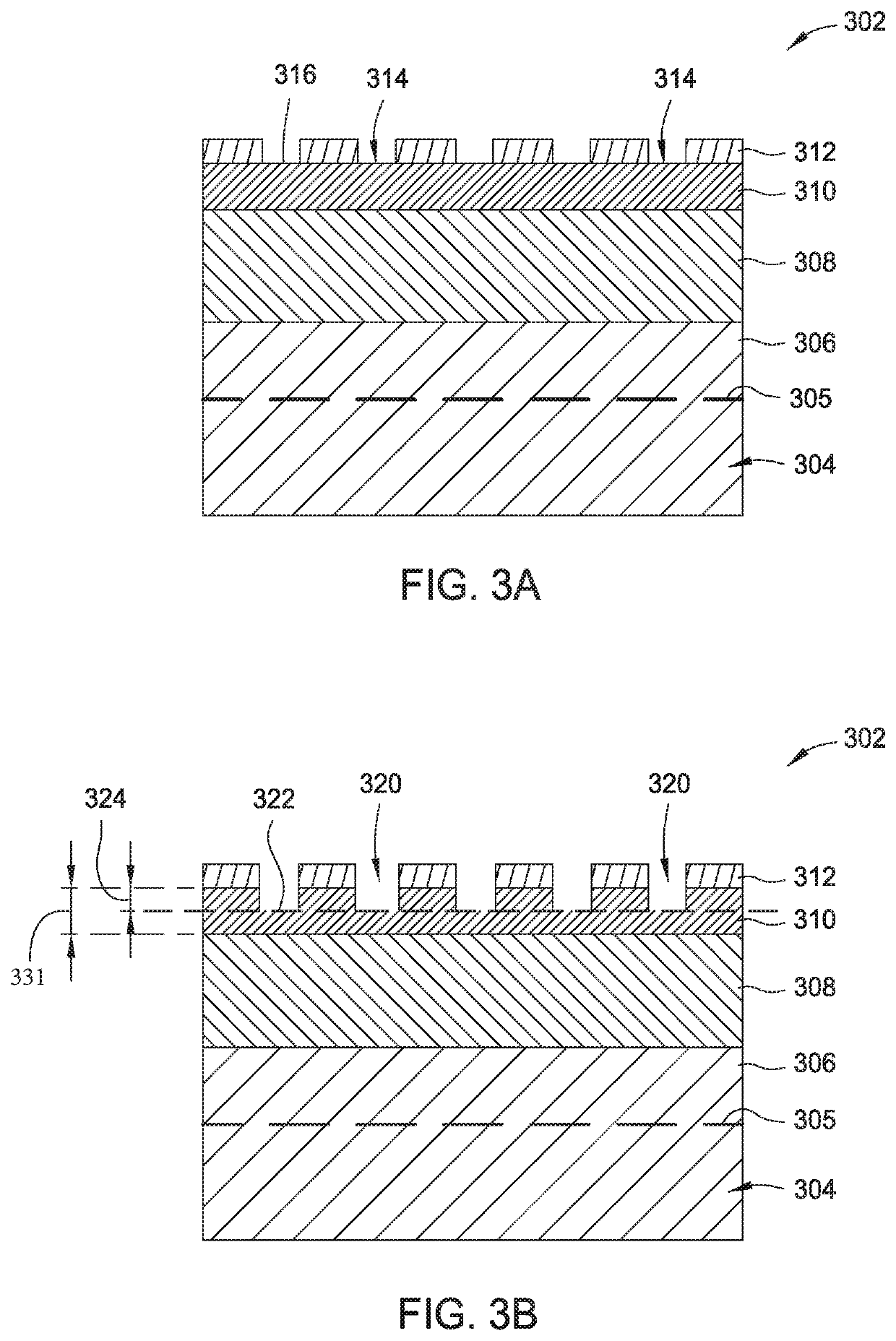Methods for etching a hardmask layer
a technology of etching process and hardmask layer, which is applied in the direction of electrical equipment, basic electric elements, electric discharge tubes, etc., can solve the problems of limiting the aspect ratio that may be obtained, and the development of etch processes capable of reliably forming features with such high aspect ratios, so as to facilitate the profile and dimension control of features
- Summary
- Abstract
- Description
- Claims
- Application Information
AI Technical Summary
Benefits of technology
Problems solved by technology
Method used
Image
Examples
Embodiment Construction
[0018]Embodiments for the present application include methods for etching a hardmask layer to form feature therein. In one embodiment, the method includes plasma etching a hardmask layer using a controlled gas ratio to form a passivation layer while etching the hardmask layer. By utilizing a passivation layer during etching, a sidewall / surface protection mechanism formed during the etching process is used to efficiently control the etching profile while etching the hardmask layer. The good bottom as well as sidewall protection during the etching process enables etching the hardmask layer with a desired profile, thus assisting transferring features with desired profile to the underlying structures / layers while retaining good profile control and critical dimensions.
[0019]FIG. 1 is a sectional view of one example of a processing chamber100 suitable for performing a patterning / etching process to etch a hardmask layer on a substrate using an etching process. Suitable processing chambers ...
PUM
| Property | Measurement | Unit |
|---|---|---|
| operating pressures | aaaaa | aaaaa |
| frequency | aaaaa | aaaaa |
| diameter | aaaaa | aaaaa |
Abstract
Description
Claims
Application Information
 Login to View More
Login to View More - R&D
- Intellectual Property
- Life Sciences
- Materials
- Tech Scout
- Unparalleled Data Quality
- Higher Quality Content
- 60% Fewer Hallucinations
Browse by: Latest US Patents, China's latest patents, Technical Efficacy Thesaurus, Application Domain, Technology Topic, Popular Technical Reports.
© 2025 PatSnap. All rights reserved.Legal|Privacy policy|Modern Slavery Act Transparency Statement|Sitemap|About US| Contact US: help@patsnap.com



